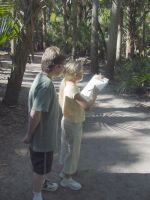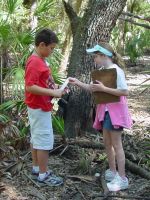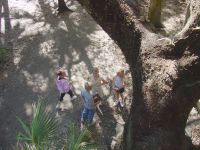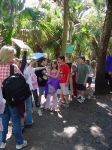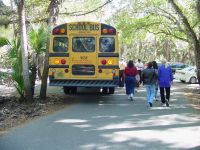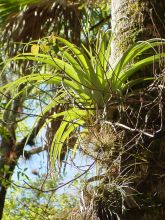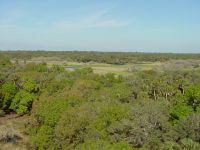 Myakka River State Park, from the tower.
Myakka River State Park, from the tower.
|
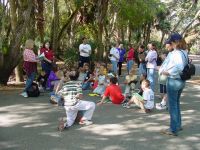 The gathering in the parking lot.
The gathering in the parking lot.
|
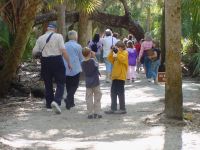 The group moves into the woods.
The group moves into the woods.
|
 Team 11, first on the path.
Team 11, first on the path.
|
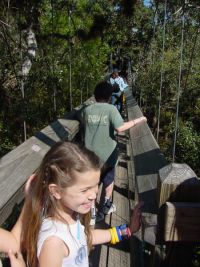
The Canopy Walk Way is discovered!
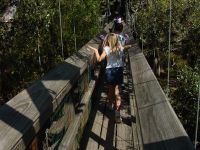
Crossing the bridge!
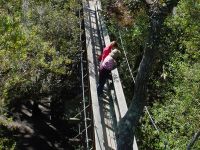
The walkway, seen from above.
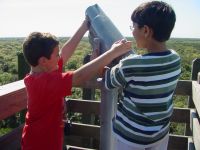
A view from the top of the tower.

|
Field Trip: 3-February-2005
It was a cool, overcast Thursday morning when I pulled into the parking lot of the Canopy Walk Way at Myakka River State Park. I began gathering my notebooks and preparing my camera, when suddenly, I heard the approach of the school bus. Spirited voices, laughter and excitement rode in with the bus and, when the bus came to a stop, spilled out into the parking lot as Miss Maughen, her students, and the parents emerged.
We gathered into a group in the parking lot and discussed our strategy - the students would locate their trees, and I would walk the path to the Canopy Walk Way, and along the way, meet each student and their bromeliads. Stephanie and Mesha (Team 11) was the first team I met. They are monitoring a large Tillandsia utriculata that is attached to a tall Sabal palm. In April, the bromeliad put out an inflorescence - a seed stalk that, next year, will release seed on the wind to propagate new bromeliads.
Ali and Hayden (Team 10) are also monitoring a beautiful T. utriculata. Everyone else is monitoring T. fasciculatas. What's the difference between a utriculata and a fasciculata? Utriculata grows as a single plant and fasciculata will grow as a clump.
Many of the trees and bromeliads being monitored were familiar to me, for students from previous years had monitored them as well. But there were a few new trees this year. They are the trees that were found and are being monitored by Samantha and Jake (Team 5); Sofia and Ben (Team 1); and Ali and Hayden (Team 10).
Lexy and Connor (Team 8) are monitoring an old, large oak at a juncture in the path that leads in one direction off on a nature trail, and in the other direction, to the Canopy Walk Way. The rest of the trees are all located near the Walk Way. Jonathon and Samatha's (Team 9) tree is another huge oak with large bromeliads. Zevin and Kendall (Team 3) are watching a long, reaching oak with a few large fasciculatas. In January, they thought they had lost one of their bromeliads, and they searched the ground for it, to no avail. Then, in March, the bromeliad was back! It had been hiding in the canopy. Merrin and Jacob's (Team 4) tree has a small garden of little bromeliads growing on the trunk. William and Kalynna (Team 2) and Grace and Chetan (Team 6) have to climb up to the Walk Way to monitor their bromeliads.
These young scientists have done a superb job collecting data in the field. Their work will be included in the data base already created from previous years.
It has been a great pleasure working with the class of 2004-2005!
tmc
6-V-2005
|
